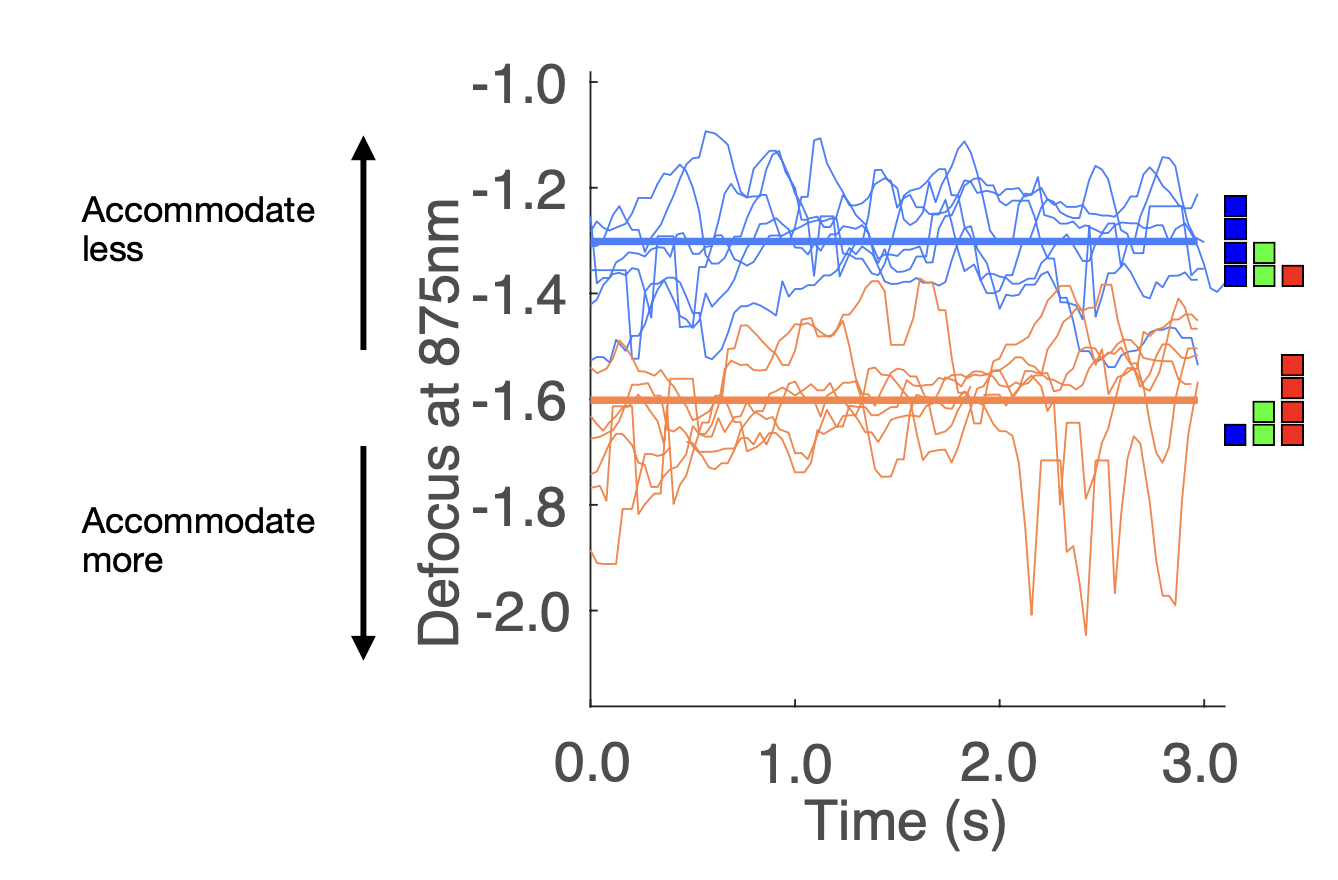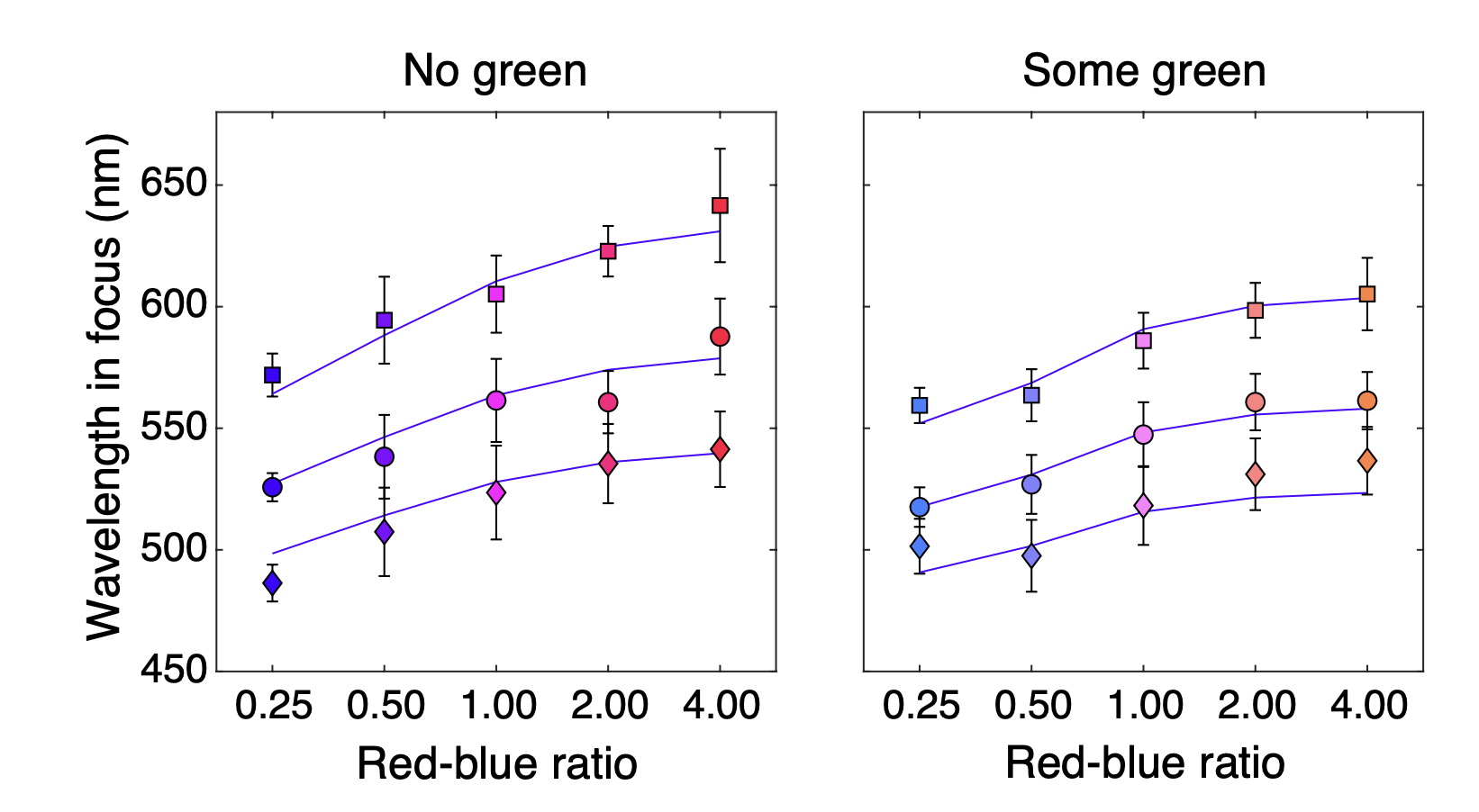Determining wavelength-in-focus during accommodation to polychromatic stimuli
Characterizing how the eye focuses on stimuli composed of different light spectra
Visual accommodation is the process by which the visual system changes the thickness, and thus power, of the lens in the eyeball to focus light from different distances. But accommodation can never be perfect because different wavelengths of light are refracted, and thus focused, differently; a phenomenon known as chromatic aberration. As a consequence, only one wavelength can be in focus on the retina at a time. What wavelength is it? And does the wavelength in focus depend on the light spectrum of the stimulus? This question is highly relevant to understanding the quality of images formed in our eyes, and may help inform theories of how myopia (short-sightedness) develops.

We found that increasing the proportion of long wavelengths in the stimulus shifted the wavelength-in-focus to a longer wavelength, and importantly, that the size of the shift is consistent with a computational model of accommodation that maximizes image quality in color-opponent channels.

